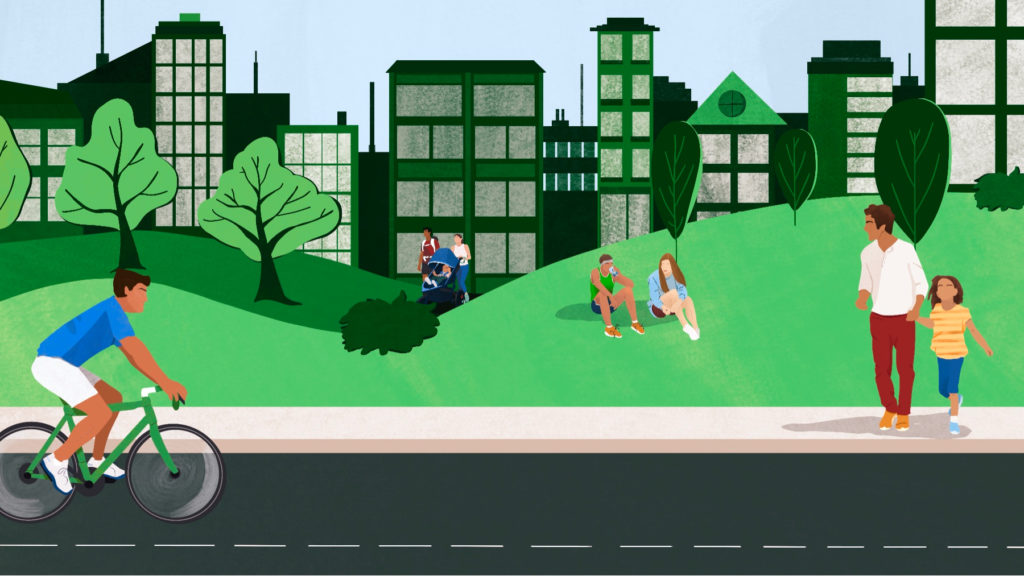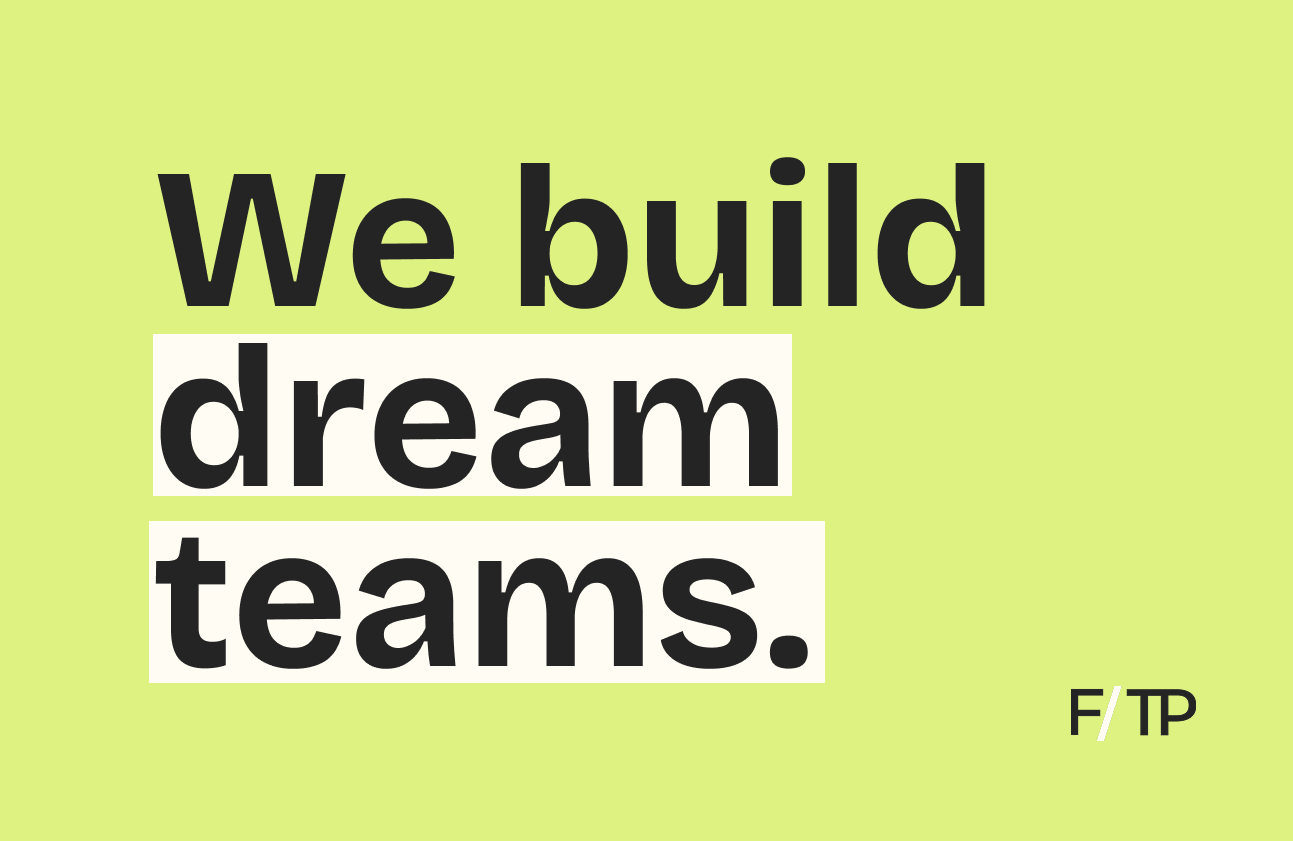Rapid urbanization has advanced society. But the rise of cities has come with a hidden cost — urban life is terrible for our health.
While fad diets and fancy fitness tech are often touted as foolproof solutions, good health depends not only on how we live, but also on where we live.
The Big Picture
Over half of the global population now lives in cities. By 2050, that number could reach 75%.
Engines of innovation, cities largely transformed our lives for the better. But, most cities materialized spontaneously with little thought paid to long-term sustainability or health consequences.
Now, urban dwellers across the world are struggling to stay healthy:
- Urban “food deserts” have led to increased consumption of processed foods, sugar, and fat, fueling the growing type 2 diabetes epidemic.
- Noise pollution from traffic and other sources is linked to heart problems and takes over 1.6M years of healthy life per year in the EU alone.
- Streets are often designed to prioritize cars over people, resulting in decreased physical activity and higher rates of obesity.
The COVID pandemic compounded these factors — 42% of Americans say they put on an extra 29 pounds (on average) this past year.
Building for Behavior
Countless studies show that just 30 minutes of moderately intense activity, like walking and cycling, can reduce your risk of death by nearly 20%.
To achieve these goals, experts point to the power of our environment: healthy habits follow healthy design.
Looking at the world’s healthiest cities, urban planning incorporates simple designs nudging citizens towards healthier habits through pedestrian-designated streets, sprawling parks systems, and improved fresh food access.
As a result, their citizens have higher disease immunity, increased quality of life, and greater longevity.
Copy Copenhagen? A prime example, Copenhagen is consistently ranked as one of the happiest and healthiest cities in the world.
Residents can walk to a grocery store or restaurant in less than 15 minutes — a growing trend in urban planning. Big “bicycle highways” and designated lanes mean that 90% of citizens don’t use a car, and over 60% of the population bikes to work every day.
According to Katrine Schjønning, Copenhagen’s head of public health:
“It’s not because it’s the healthy choice. It’s because it’s the easiest choice. The city is designed for bikes and not cars.”
Designing for health is nothing new. Throughout history, metropolises have used design and technology to protect us against infectious diseases. Now, the pandemic is helping us look once again at our built environment to fight a growing wave of health crises.
Mobility. A growing trend before lockdowns, city governments started to participate in the concept of open streets, designating areas of unrestricted play and walkable commerce, usually only for a single day.
But in COVID times, these closed blocks stayed in effect long-term — allowing restaurants and fitness clubs to move their businesses onto streets and sidewalks. The benefits were practically immediate, from reduced pedestrian injuries to lower noise/air pollution.
A parallel trend, bikes boomed during the pandemic. While traditional bikes stayed on backorder for months, US e-bike sales surged by 240%.
Next up, Paris just rolled out plans to become a 100% cyclable city, while others push for “playable” cities as the next step forward.
Greenery. Green spaces mitigate environment-driven mental health problems while counteracting carbon pollution. In fact, Central Park was created in the name of public health in response to a cholera epidemic.
Today, most cities are more concrete jungle than actual jungle — much to our own detriment.
But there are exceptions. With some of the healthiest residents in the world, over 40% of Singapore is covered in green, with 30% tree canopy cover and 300km of lush forest corridors throughout the city.
For many overcrowded American metropolises, the answer is turning greener from inside out. Vertical farming startups like Bowery and Plenty are scaling up in urban areas to tackle food deserts.
Real estate. Unwilling to wait for lawmakers, health seekers are moving into wellness-minded communities. Amenities in these sanctuaries aim to support holistic health, from circadian lighting to air filtration tech to community-centric design.
Major players like Delos have made headway here, tapping a surging global wellness real estate market that has nearly doubled in recent years. Meanwhile, projects like Gravity in Columbus are betting that wellness centers will become the new golf course retirement communities.
Getting Smart
In the past, public and private sectors have struggled to work together (even Google-backed Sidewalk Labs fell short). But COVID is reshaping public-private partnerships, and now an overwhelming majority of city leaders are investing in smart city tech.
The potential impact is massive — experts estimate that nearly 20% of all deaths could be prevented if cities followed international recommendations for factors of health.
- Assisting with data collection, MIT’s Senseable City Labs attaches sensors to existing city infrastructure to map air quality, heat, and noise.
- Honing in on buildings, architects are integrating neuroaesthetics into building designs for mental well-being.
Punchline: Beyond fitness apps, health wearables, and connected equipment, there is an urgent need to reexamine the environmental factors that impact our well-being.
Though innovations are promising, technology alone cannot drive health for urban populations. In the coming years, urban planners will need to operate at the intersection of health and design, weaving in tech that complements, not complicates, our urban jungles.
⛰ Climb On
The Outdoor Economy is booming and rock climbing is gaining momentum.
On the Fitt Insider Podcast: Brooklyn Boulders CEO Martin Adler joined us to discuss the company’s indoor climbing, fitness, and community centers.
We also cover: the growing business of rock climbing, leveraging technology to enhance the climbing experience, and falling in love with the joy of movement.
Listen to today’s episode here.
⚖️ Patent Wars
As connected fitness becomes more competitive, the category is growing more litigious.
The latest development? Peloton and lululemon are squaring off over the smart bike maker’s new activewear line.
Look-alike Leggings. Once apparel partners, Peloton ended its co-branding relationship with lululemon earlier this year ahead of launching its own clothing line – the designs of which set off a legal battle.
- Nov. 11: lululemon sent a cease-and-desist letter to Peloton, alleging that six of Peloton’s apparel products infringed on lululemon design patents.
- Nov. 24: Peloton sued lululemon seeking a declaration that it did not infringe on designs.
- Nov. 29: lululemon fired back, filing suit against Peloton for intellectual property right infringement.
Apparel aside, the two companies are also connected fitness adversaries following lululemon’s acquisition of MIRROR in June 2020.
Lawyer up. Nothing new, lawsuits are becoming par for the connected fitness course. And Peloton is often the antagonist.
- On November 19, Peloton filed new lawsuits against iFit and Echelon, alleging patent violations related to its leaderboard and live/on-demand classes.
- Last year, Peloton and iFit sued one another, with iFit noting it obtained “hundreds of of the patents before Peloton was founded.”
- In 2019, Peloton sued Echelon, accusing it of creating “cheap, copycat products.”
Of note, in 2020, Peloton sued Flywheel Sports, forcing the company to shut down its at-home business as part of a settlement.
On the docket. Cardio equipment has taken center stage, but keep an eye on connected strength training — where Tonal has a robust patent on “a method and apparatus for digital strength training.”
😐 Fitbit For Emotions
Emotion sensing tech is getting sophisticated. Startups are using biometric data, like speech, heart rate, or even facial expressions, to detect your mood.
- Spire Health, which monitors breathing patterns to determine tension, calm, or focus, recently raised $38M.
- Reflect Innovation, an Israel-based startup that can track users’ stress and emotional state, secured $3M in a seed round earlier this year.
- Sonde Health launched Sonde Mental Fitness in October, which can evaluate mental well-being using vocal biomarkers.
Beyond other upstarts like Sentio Solutions, Upmood, and EmotiBit, Big Tech also wants a piece of the $37B emotion tech pie:
- Apple is working with UCLA on developing iPhone sensors that can diagnose depression and cognitive decline.
- Amazon’s Halo health tracking bracelet incorporates a “Tone” feature that can analyze a wearer’s “energy and positivity.”
- Facebook parent Meta’s upcoming VR headset, Cambria, will be able to sense emotion and transmit it into the “metaverse.”
And, earlier this year, Spotify received a US patent on tech that can listen to your speech, read your emotions, and recommend songs or ads based on sentiment.
Mind-body connection. A key aspect of our mental health, emotions are integral to our holistic well-being. If that’s so, leveraging tech to monitor our emotional health, just as we do for our physical health, is a logical extension.
Punchline: Advancements in emotion tracking could unify mental, physical, and behavioral health into a single ecosystem, revolutionizing our overall well-being. While concerns over privacy, data, and accuracy remain, emotion-sensing tech is shaping up to be a market with massive potential.
📰 News & Notes
- adidas enters the metaverse.
- MOOLESS debuts animal-free whey protein powder.
- Arena Games Triathlon to crown esports world champion.
- Nike launches “Mind Sets” — a movement series for the mind.
- Amazon’s personalized meal planning adds “Alexa, what should I eat?”
- Snapchat’s Food Scan uses computer vision to identify foods and ingredients.
- Fitt Jobs: Explore 900+ curated openings from top health and fitness companies.
- Startup Q&A: JOON co-founder Jonathan Shooshani on prioritizing employee well-being
💰 Money Moves
- Men’s grooming brand MANSCAPED will go public at a $1B valuation via SPAC merger with Bright Lights Acquisition Corp.
- Continuous glucose monitor Levels raised over $6M at a $300M post-money valuation on crowdfunding site Wefunder.
On the Pod: Our conversation with Levels co-founder Josh Clemente - Apothékary, a plant-based supplement brand, closed $3.5M in a seed round.
- Aging-focused biotech company Longevica raised $2.5M in strategic funding to launch its open research tool.
More from Fitt Insider: The Quest to Live Forever - German food startup Perfeggt, creators of an egg alternative made with fava beans, secured $2.8M from Stray Dog Capital, EVIG Group, and others.
- Sundial Foods, makers of plant-based chicken wings, landed $4M in a seed funding round from Nestlé, Food Labs, Clear Current Capital, and others.
More from Fitt Insider: Investors Bet Millions on Plant-based Nuggets - Food tech company New Culture, makers of animal-free cheese products, raised $25M in an oversubscribed Series A round led by Ahren Innovation Capital and CPT Capital.
More from Fitt Insider: The Quest for Cow-free Milk - Goodles, a healthier macaroni and cheese brand, launched after securing $6.4M in funding from Springdale Ventures, Third Craft, and others.
- Heaps Normal, an Australian brewer of nonalcoholic beers, pulled in $8.5M in a Series A round.
More from Fitt Insider: The Impact of Dry January - Rosy, a women’s sexual health and wellness platform, raised $2M in seed funding.
- India-based mental wellness platform Mindhouse secured $6M in a seed round led by entrepreneur Binny Bansal, with participation from General Catalyst and others.
- Osprey, makers of technical and everyday packs, was acquired by publicly traded holding company Helen of Troy.
More from Fitt Insider: The Outdoor Economy
Today’s newsletter was brought to you by Anthony and Joe Vennare, Melody Song, Wesley Yen, and Ryan Deer.






